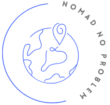Last Updated on 2 months by Victoria
Northern Argentina and its technicolor landscapes, delicious cuisine, and affordability has long been a popular destination for locals. Although less familiar to international travelers, this region is a must-visit for anyone seeking a serene escape from the hustle and bustle of city life.
It took me way too long to finally make it to Salta and Jujuy, but I’m so glad I did! I was blown away by the non-stop gorgeous landscapes – the kind that make you shout “pull over!” on a road trip. The bright red and orange hues of the rock formations that contrast with unexpected pops of greens are completely mesmerizing.
Coming from Buenos Aires, it’s immediately clear that life in these provinces flows at a radically different pace. Everything is Salta and Jujuy is much slower, so take your cue and enjoy the journey! Sit back, relax, have some northern empandas with a glass of wine from Salta, and enjoy the view.
This website contains affiliate links that might earn a commission for purchases made at no additional cost you.
Getting Around
To reach northern Argentina from Buenos Aires, you’ll want to fly into either Salta or Jujuy. We found more frequent routes to Salta, making it our entry point. Once there, you can take buses to major destinations like Purmamarca and Tilcara, and get to the more remote destinations with a tour.
However, figuring out some of the logistics could be challenging, and hiring tours adds up quickly. Especially if you are on a short 5 day itinerary, we highly recommend renting a car. There are some gravel and dirt roads, but most are paved and in good condition, meaning you won’t need a four wheel drive.
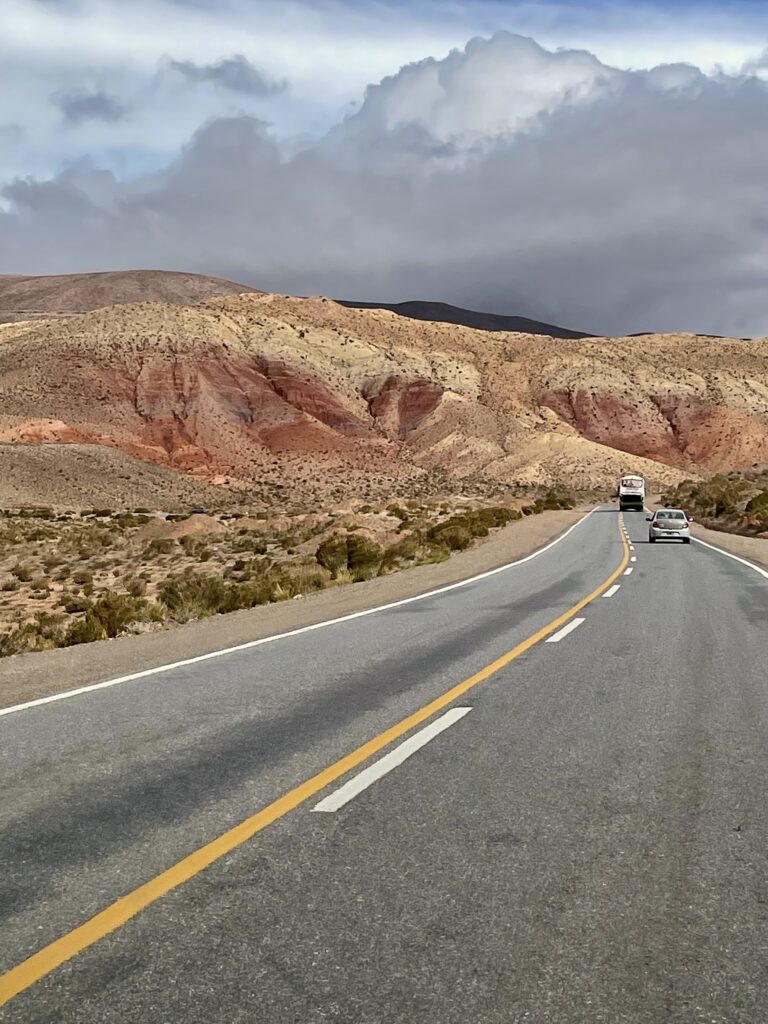
5-day Northern Argentina Itinerary
With just a few days to see the highlights, this itinerary focuses the region’s stunning multi-colored rock formations, the expansive salt flats, and its charming towns. Let’s dive in!
Days 1-2 Salinas Grandes and Purmamarca
Salinas Grandes
We arrived in Salta late that night, so we stayed at B&B near the city center and prepared to start our travels first thing in the morning. The next day we went straight to pick up our rental car to head to our first stop, Salinas Grandes (salt flats).
While many people go to Purmamarca and day trip to Salinas Grandes from there, we decided to do the 3- 4 hour drive to Salinas Grandes first to maximize our short stay.
The drive to Salinas Grandes involves crossing the Cuesta de Lipan (Lipan Slope), which at 4170 m is the highest point in Jujuy and offers stunning views of the landscape.
Once you get to Salinas Grandes you’ll be presented with a shiny white surface that extends as far as you can see. The contrast with the mountains in the distance is stark and makes for amazing pictures!. A storm had just rolled through when we were there, which made for some eerie, album cover-worthy shots.
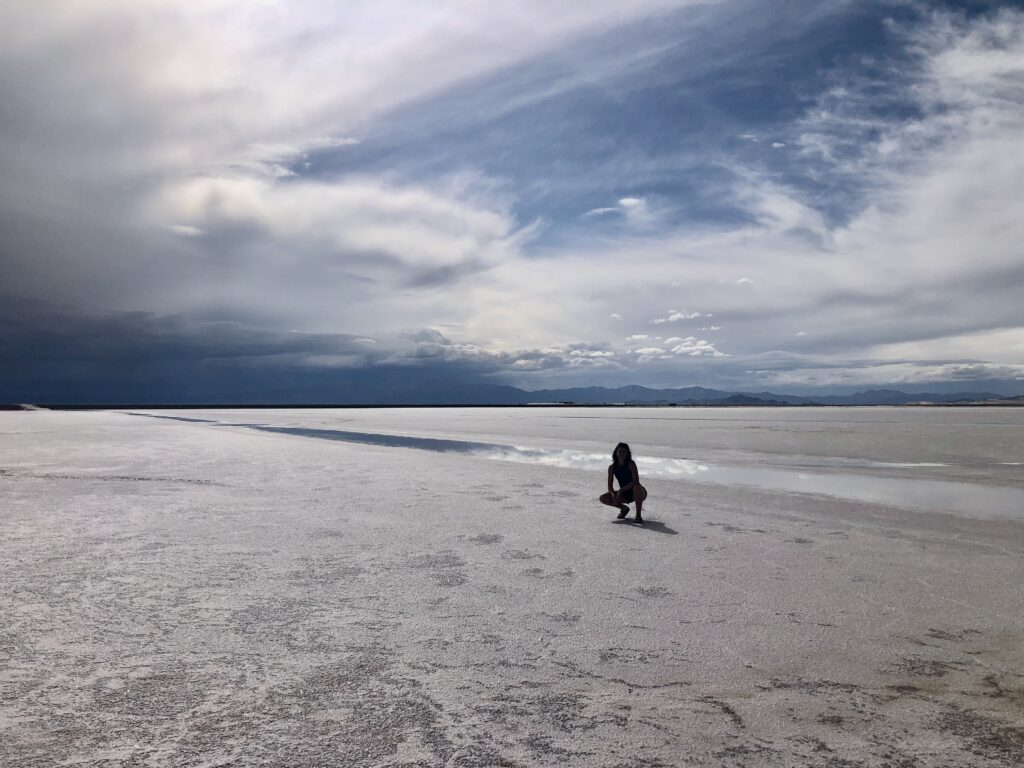
You can explore Salinas Grandes on your own, but it is also possible to pay someone to take you further in and see the Ojo del Salar.
Purmamarca and el Cerro de los Siete Colores
After exploring Salinas Grandes, we drove to Purmamarca, a charming town of adobe houses set against the backdrop of the Cerro de los Siete Colores (Hill of Seven Colors).
The Cerro de los Siete Colores is a stunning hill with layers of colored sediment and is the main attraction here, so we recommend you spend several hours exploring the various viewpoints and trails that wind through the hills.
The town is also known for its artisanal markets, where you’ll find a variety of wool clothing, pottery, and accessories, and its peñas, traditional eateries that usually have musicians playing during lunch and dinner.
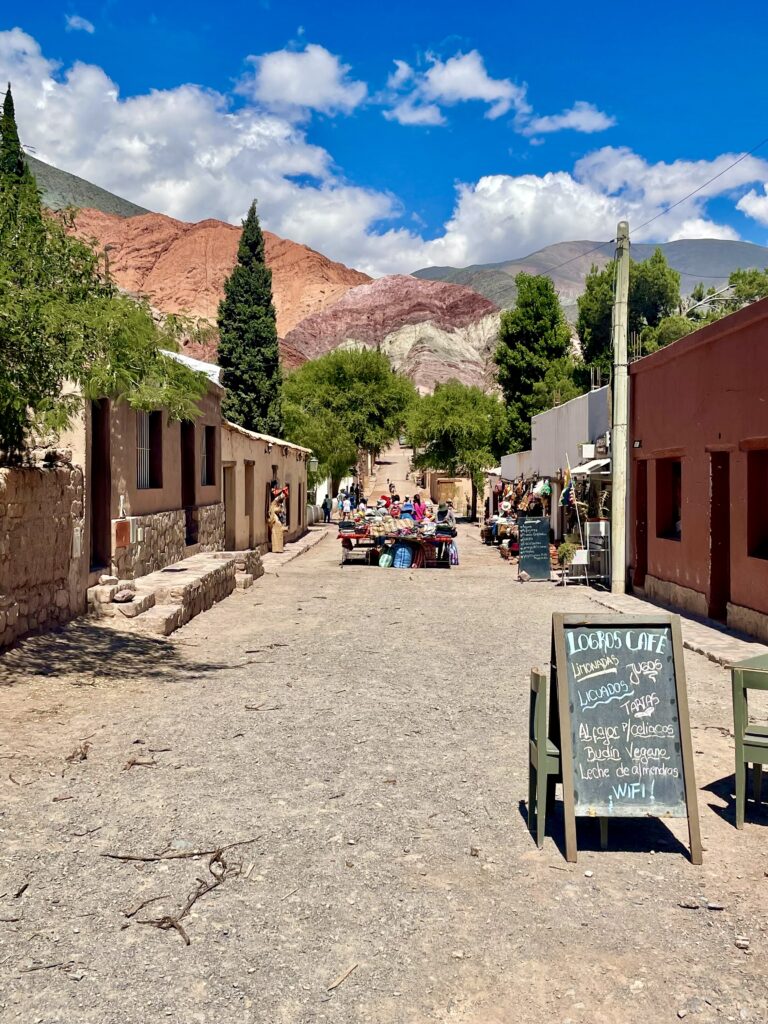

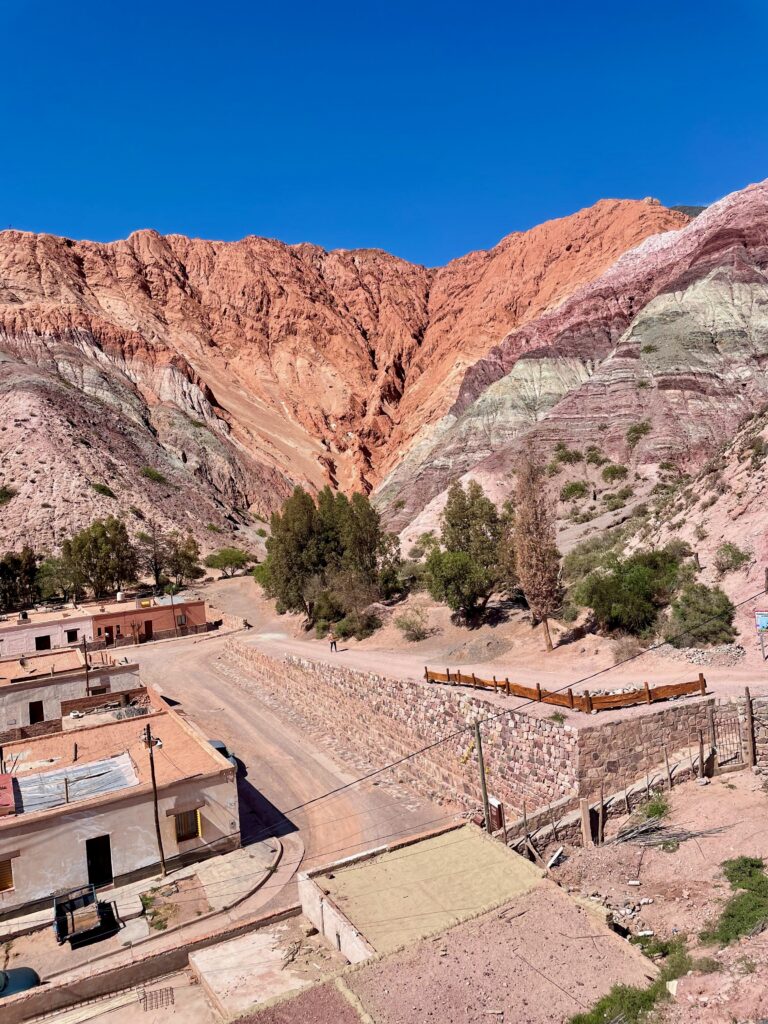
Tour options
If you’d like to reduce driving (or aren’t driving at all!) there are plenty of tour options for these sites.
Salinas Grandes and Los Colorados Hike | check out pricing and book here.
El Hornocal and la Quebrada de Humahuaca | check out pricing and book here.
Days 2-4: Tilcara and Humahuaca
Tilcara and la Garganta del Diablo
We left Purmamarca and headed towards Tilcara, a vibrant town known for its rich history and cultural heritage. Visit the Pucará de Tilcara, a pre-Incan fortress perched on a hill, offering panoramic views of the surrounding valley and mountains.
The site includes reconstructed stone structures and provides insights into the region’s ancient civilizations. In the afternoon, explore the town of Tilcara, visiting its lively market and sampling local street food.
For those interested in nature, you can hike to la Garganta del Diablo, a small waterfall. The hike is moderate and you can start from town (about 5 miles round trip), or you can drive to the entrance. There is a fee to enter the park, so remember to bring cash!

Humahuaca and El Hornocal
The next day we drove to Humahuaca to spend some time in town and see El Hornocal. If you thought the Cerro de los Siete Colores was beautiful, wait until you see el Hornocal!
Also called el Cerro de los Catorce Colores, el Hornocal is located about 25 kilometers from the town of Humahuaca. This geological marvel stands at an altitude of approximately 4,350 meters (14,270 feet) above sea level, so you may need a sweater even during summer.
El Hornocal is renowned for its strikingly colorful strata, which span a broad spectrum of hues from deep reds and vibrant purples to yellows and greens. These colors are the result of various mineral deposits that have been exposed and eroded over millions of years.
The hill’s dramatic zigzagging formations and vibrant layers create a surreal and awe-inspiring landscape, especially when viewed under the clear, high-altitude sky.

Humahuaca is a historic town that serves as a gateway to the Quebrada de Humahuaca. The town stands out for its well-preserved colonial architecture, narrow cobblestone streets, and vibrant local culture.
Here you can visit the Monument to Independence (Monumento a los Héroes de la Independencia), which stands on a hill overlooking the town and honors the region’s role in Argentina’s fight for independence.
Day 5: Salta
On the last day we drove to Salta to finally spend some time in this capital city. The heart of Salta is Plaza 9 de Julio, a bustling square surrounded by historic buildings.
We spent the afternoon walking around the plaza, where you can visit the beautiful neoclassical Salta Cathedral and the Cabildo, a colonial-era government building turned museum, and immerse yourself in the local history and culture at the Museum of High Altitude Archaeology (MAAM).
The MAAM houses the well-preserved Incan mummies known as the children of Lullaillaco. The study and display of the mummies has been controversial, so deciding to visit is a matter of personal preference.
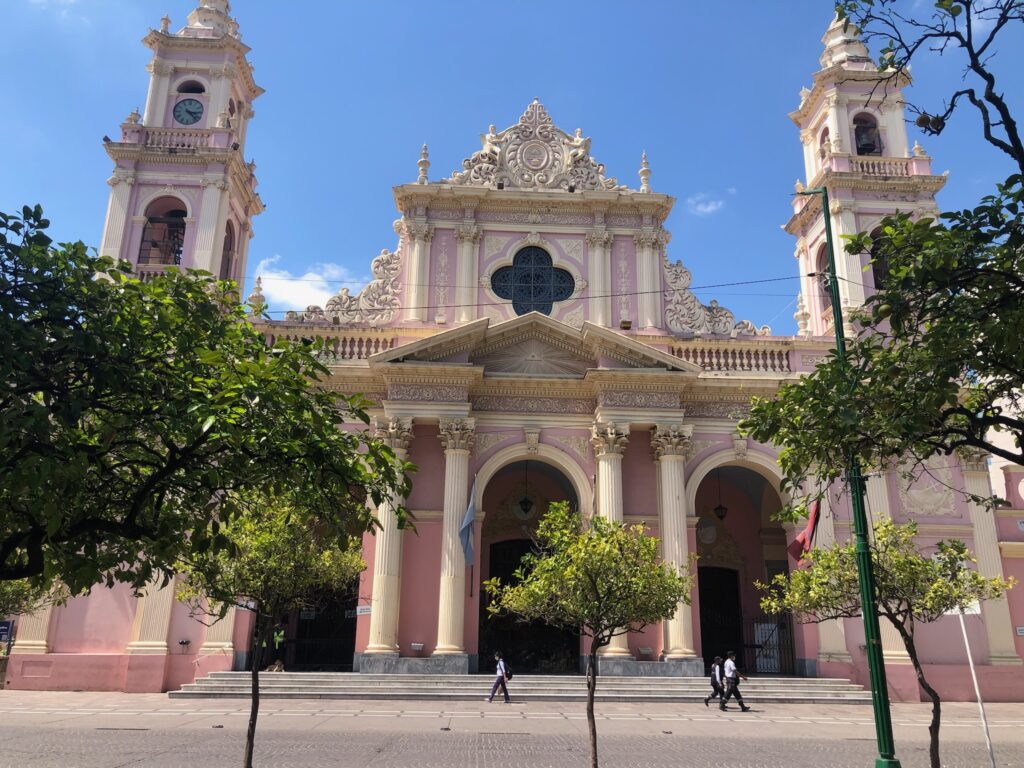
Best Time to go
Northern Argentina has a desert climate, meaning you can expect warm days and cool nights year-round. To avoid the hot and rainy summers, you’ll probably want to visit between April and November.
We visited in December, and while it was hot, we found it to be manageable. If you are traveling during the rainy season, make sure you keep an eye on the weather as heavy rains can sometimes make roads impassable.
Where to stay
Salta
Salta is the capital city of the province of Salta, so it has the widest range of accommodation options. The best place to stay in the city is near the historic downtown, since you’ll have easy access to many of the city’s restaurants and attractions.
Departamentos Ibazeta $ | An apartment can be a great lodging option if you are looking to so some cooking or a traveling with a bigger group. These apartments are centrally located, the kitchen is well stocked, and it has a terrace where you can enjoy some sun.
Villa Vicuña Salta Hotel Boutique $$ | This beautiful colonial hotel is known for its central location, decor, and friendly staff. The property has a lush garden and pool to relax at after exploring.
House of Jasmines Relais & Châteaux $$$ | This hotel is 7 miles from the city center, but if you’re looking for a retreat – this is it! This gorgeous property boasts a spa, a fantastic breakfast, and amenities.
Purmamarca
Purmamarca is charming town known for its small adobe houses with flat roofs and peñas, so there is no shortage of cute guesthouses and B&Bs to stay at!
Villa Narcisa $ | Right in the middle of town, this vacation home offers a terrace, a well equipped kitchen, and stunning views of the mountains. What else could a traveler want?
Moller Masi $$ | This spacious 3 bedroom home is ideal for families are bigger groups visiting Purmamarca.
Los Colorados Cabañas Boutique $$$ | These gorgeous red clay bungalows place you right in front of the mountains. Guests call this stay a “peaceful paradise.”
Tilcara
Tilcara doesn’t quite have the charm of Purmamarca, but it is also no quite as touristy. It’s also a great home base to enjoy the surrounding region, so there’s plenty of accommodation and delicious food options.
Tierra Andina Hostel $ | A clean hostel with friendly staff, free parking, and shared lounge. Guests rave about the location and value of this stay.
Vientonorte $$ | We stayed here during our trip and loved it! It’s just a few blocks from town, extremely clean, they served a delicious breakfast AND they have a pool!
CasaCalma Hotel Boutique $$$ | This beautiful hotel might be slightly removed removed from town, but it makes up for it with its cozy decor, amazing breakfasts and dinners, and llamas on site.
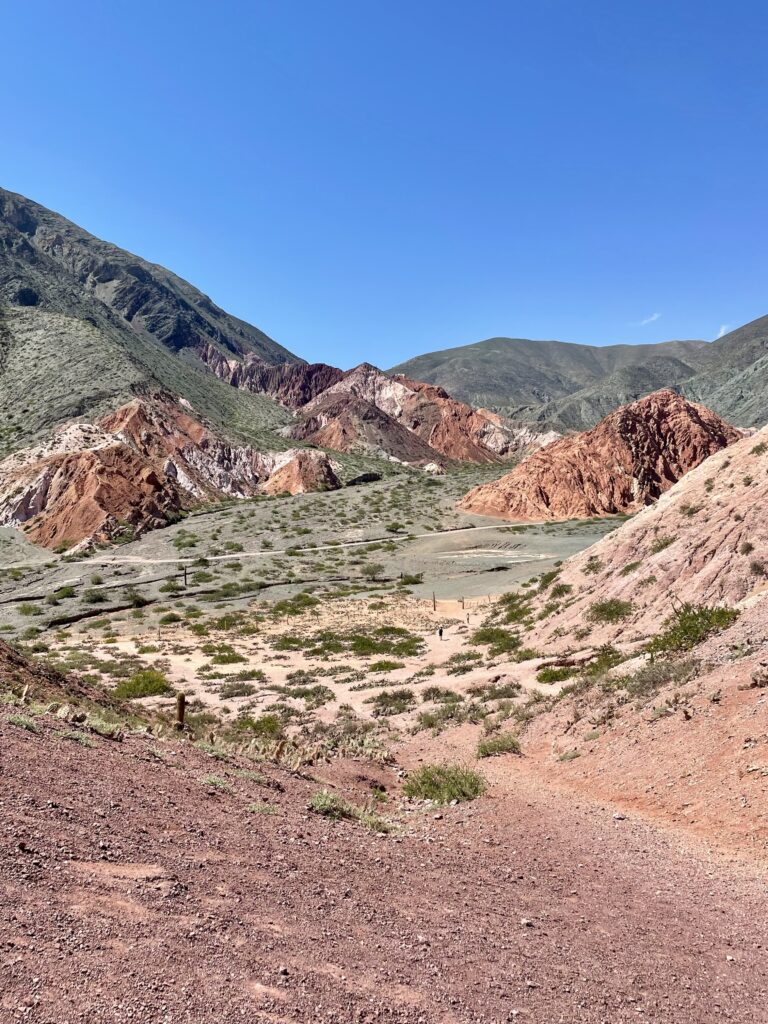
What to eat
For the gastronomically-inclined traveler, there are a few dishes that you can’t leave without trying. These are traditional to the region so you’ll be able to try them at most restaurants and food stands.
Empanadas: these are savory pastries filled with a variety of ingredients, which you are probably familiar with if you’ve traveled just about anywhere in Latin America. In northern Argentina, the most popular fillings include beef, chicken, or cheese mixed with spices, onions, and sometimes boiled egg or potato. Each province has its own version of an empanada. While they are usually baked, empanadas salteñas are often fried making them juicy and flavorful.
Humita: this is a traditional dish made from fresh corn, cheese, and spices wrapped in corn husks and steamed. It can be enjoyed in two forms: humita en chala (wrapped in corn husks) or humita en olla (cooked in a pot). The result is a creamy, savory dish that highlights the sweetness of the corn.
Tamales: Tamales in northern Argentina are made from corn dough filled with meat (usually beef or pork), seasoned with spices, and wrapped in corn husks before being steamed. They are a flavorful and hearty dish, often served during special occasions and festivals.
Locro: this is a rich, hearty stew made from corn, beans, potatoes, and different cuts of meat, often including chorizo and pork. This traditional dish is typically enjoyed during national holidays and cold winter months, providing a comforting and filling meal.
Tortilla rellena: these are popular street food, which you can’t pass up while exploring the towns in northern Argentina. It is a flour tortilla filled with cheese and other ingredients, like ham or corn, and grilled to perfection.
Final Thoughts
We loved Salta and Jujuy and can’t wait to go back! The laid back pace, comforting food, and stunning landscapes made for an amazing getaway.
If you have more than 5 days, there are plenty of additional stops you could add to your northern Argentina itinerary! Head south of the city of Salta and check out some amazing rock formations in la Quebrada de las Conchas as well as Salta’s wine country in Cafayate.
More Posts about Argentina
Navigating Money in Argentina: A Traveler’s Guide to Exchange Rates, Cash, and Credit Cards
Buenos Aires Travel: a Local’s Guide
Explore Patagonia: El Calafate and El Chaltén Itinerary
How to Visit the Perito Moreno Glacier (Everything you Need to Know)
The Ideal 3 Days in Buenos Aires [Itinerary + Map]
Victoria is an Austin-based travel content creator passionate about encouraging her readers to step outside of their comfort zone and step in to a life of adventure. She is the founder of the travel blog Nomad No Problem.
